Via Robin Good
Get Started for FREE
Sign up with Facebook Sign up with X
I don't have a Facebook or a X account
 Your new post is loading... Your new post is loading...
 Your new post is loading... Your new post is loading...

Pierre Clause's curator insight,
January 5, 2014 5:07 AM
Adding value can be as small as : what touched me in this article ? what resonates for me ? any sensible way to express your P.O.V. actually ! 
SyReach's curator insight,
July 7, 2014 4:53 AM
SyReach Notes now offers a full coverage of personal KM needs: Seek with integrated watch module and search engines, Sense with note and article edition, linking and knowledge building. Share by email or publish to Scoop.it selected resources linked to your articles!
kitty de bruin's curator insight,
October 25, 2013 4:15 AM
co creating, such a nice way to work together 
irene's curator insight,
January 10, 2014 9:16 AM
Perché il futuro del Crowdsourcing va in direzione della cura, sintesi e cose varie.

Ajo Monzó's curator insight,
September 26, 2014 7:20 AM
Muy interesante y profunda charla sobre el concepto de "curación" . 
ManufacturingStories's curator insight,
September 26, 2014 8:47 AM
For more resources on Social Media & Content Curation visit http://bit.ly/1640Tbl 
Jimena Acebes Sevilla's curator insight,
October 18, 2014 6:25 PM
El curador de el curador es el de presentar información especializada a una audiencia interesada.

R.G. Riles's curator insight,
March 23, 2013 1:31 PM
Until our blog is ready to roll, we're Curators... have a look at this Infographic and tell us how we're doing!

Danielle M. Villegas's curator insight,
January 18, 2013 8:39 PM
This is a really good article about content curation. There is nothing wrong with doing content curation, as it provides insight from multiple sources. As this article points out, the trick is curating content that adds value to whatever it is that you are adding the content to. In my case, it's my blog. I've followed most of these guidelines instinctively, because I want to provide quality information to share with fellow technical communicators and e-learning specialists.
Read this one carefully, as it's chock full of good advice. --techcommgeekmom 
Better Homes, Better Life's comment,
January 26, 2013 11:31 PM
I see that you are making some of these into almost like blog posts too. Jan Gordon does the same thing. I think I am going to try it out...

Robin Good's comment,
April 18, 2012 1:16 AM
Thank you Jonathan. Glad to be of help and inspiration to you.

Tony Gu's comment,
April 20, 2012 1:30 AM
I am really enjoying reading this article.
I found that the way Robin Good curate this article truly practice the ‘No Stealing’ rules. Thanks for sharing this with all of us. Big up!

Otir's comment,
February 25, 2012 11:25 AM
Great insight, thank you! In the constant stream of innovations - sometimes fads too - it is comforting to find complete write-ups that give enough "meat" to what is going on online, and why some tools get traction.

Beth Kanter's comment,
February 25, 2012 1:32 PM
Jan, thanks for bringing G's post to our attention. I'm excited about the combination of the two tools like you are! And thanks for including me in your collection!

Beth Kanter's comment,
December 20, 2011 7:34 PM
Thanks for sharing this from Robin's stream. These skills sets could form the basis of a self-assessment for would-be curators, although they're more conceptual - than practical/tactical. Thanks for sharing and must go rescoop it with a credit you and Robin of course

janlgordon's comment,
December 20, 2011 7:56 PM
Beth Kanter
Agreed. It's also one of the articles I told you about....good info to build on:-)

Beth Kanter's comment,
November 17, 2011 3:04 AM
I like her steps too, although I tend to present them in a more simplified way for my audience. Great find.

janlgordon's comment,
November 17, 2011 11:51 AM
Hi Beth - Good point, the simpler the better, I agree with you:-)
|

Peg Corwin's curator insight,
February 1, 2014 9:06 PM
6 recommendations for CURATED CONTENT, in an infographc (with paragraphs?) At last I understand why an edited title is recommended. It's so your post does not compete in search with the original for the same keywords. If you like this scoop, please consider a thumbs up or share.

Gianfranco Marini's curator insight,
October 26, 2013 11:37 PM
Traduco liberamente la recensione di Robin Good dall'inglese.
Spiegare cosa sia la content curation - cura dei contenuti a qualcuno che non lo sa non è semplice dato che vi sono molte definizioni, articoli, concezioni e interpretazioni che la riguardano.
Per offire un aiuto a chi avesse necessità di spiegare la content curation sono qui presentati 5 gruppi di risorse:
1) Content Curation - Definizioni raccolta delle migliori definizioni di content curation http://bundlr.com/b/content-curation-definition
2) Content Curation -video 30 brevi clips video che introducono alla content curation http://huzzaz.com/collection/content-curation-what-is-it
3) Content Curation - infografiche oltre 110 infografiche che spiegano cosa sia la content curation http://www.pinterest.com/robingood/content-curation-visualized/
4) Content Curation - strumenti oltre 100 tra i migliori strumenti per la content curation http://contentcuration.zeef.com/
5) Mappa sugli strumenti per la content Curation - collezione di strumenti più di 600 strumenti per la content curation (organizzazione pubblicazione, categorizzazione, scoperta, ecc) http://bit.ly/ContentCurationToolsSupermap

Leah Lesley Christensen's curator insight,
December 2, 2013 1:37 PM
Never heard of it - must be worth sharing :) 
Maria Richards's curator insight,
March 29, 2014 4:50 PM
This link is invaluable to support an understanding of content curation.

Klaas Joosten's curator insight,
September 30, 2013 4:22 PM
We can use these steps for our to become experts ! 
enrique rubio royo's curator insight,
October 20, 2013 1:44 PM
Sencilla y útil exposición del proceso de curación de contenidos (excelente síntesis la de la imagen), incluyendo recursos y herramientas que lo facilitan en cuanto al coste temporal requerido en toda curación de contenidos.

wanderingsalsero's curator insight,
May 23, 2013 8:37 PM
This is an evergreen interesting topic. I was especially intrigued with the title up above that said "Social Media Job of The Future". There might be a lot of prescience (sp?) in that choice of words. 
Dawn Adams Miller's curator insight,
May 23, 2013 11:12 PM
Anything from LnD Dave is pure hold and very practical. Enjoy' 
Susan Wegmann's curator insight,
May 24, 2013 8:51 AM
A GREAT resource for the buzzword "Content Curation." Finally!

Robin Good's comment,
April 8, 2013 5:40 PM
Excellent feedback and comments Karen and Beth. Thanks to both of you for sharing your preferences.

Ken Morrison's comment,
April 14, 2013 6:27 PM
HI Robin, Just a quick note to say thanks for another year of your great curation. I see your posts often, but today is the first time I noticed the 'extra touch' of your customized background with your photo and name. Smart use of the customized background.

Robin Good's comment,
November 12, 2013 9:03 AM
RebelMouse was born to build a social media hub, but it does have strong aggregation, filtering and curation capabilities. SEO-wise it is not a great choice, but also Scoop.it has quite a few limits on this front. <br><br>Rebelmouse doesn't offer all of the extras Scoop.it has, from scheduling, to sharing to an extended number of social networks, to integration with newsletter and to the backend dashboard. <br><br>Scoop.it has also a better, cleaner and more legible format, that better lends itself to more in-depth reading than just browsing titles, images and tweets.

Stan Smith's comment,
November 12, 2013 9:22 AM
While I still use RebelMouse I have disconnected all inbound links because it posts it wacky and I was always having to go back and edit stuff. Now that I post stuff manually with their applet it isn't so bad. I still prefer Scoop.it though.

Terheck's comment,
November 12, 2013 4:12 PM
I use Rebelmouse for a while now, and I like it as a complementary tool to other Social Media tools. You can have a look at it on https://www.rebelmouse.com/Terheck/

Shaz J's comment,
September 3, 2012 3:20 AM
You're welcome :)
It's interesting interesting that you mention POV and stance, as that is not something I had explicitly articulated for myself, but naturally it must be implicitly true. In that sense, it reminds me (again) that curation forces self-reflection in order to present the content better, and that can only be a good thing. 
Liz Renshaw's comment,
September 8, 2012 9:57 PM
Agree with posts about curation guiding self reflection. This interview in particular is top value and two of my fav people indeed.

Andrew McRobert's curator insight,
August 19, 2014 8:43 AM
8. This links a series of three interviews quite lengthy but there is some insightful information for the novice in the digital information age. There is video links within the article, including a great question and answer with Robin Good on curation. The video brings a balance to this inclusion.

Beth Kanter's comment,
March 11, 2012 1:01 PM
Thanks Robin for sharing and curating this article with your summary. I discovered it via Barbara Bray's collection where she had re scooped your scoop -- [and if following the curator's code added a via]. I came over here to rescoop (with a via!) because you are the original source and one of the links was broken (you corrected it and added an update) thus reminding me the importance of going to the original source. Here on scoop.it you can just follow the trail of the rescoop icon.
I am disappointed that the bookmarklet doesn't work together with the scoop.it one - but it would be great to have it integrated. Now to figure out how to rescoop it with the characters. 
Robin Good's comment,
March 11, 2012 1:12 PM
Hi Beth, thanks for your kind feedback. I was just out today for a video interview with Nancy White here in Rome, and she mentioned you as someone she likes for your ability to curate and make sense of things.
Re the integration of the curators' code icons, I have received feedback from Guillaume De Cugies of Scoop.it that he has been exchanging with Maria Popova and that he is looking with her for a way to integrate the two. For now you can simply install the Curators' Code bookmarklet and use the "via"<a href="http://www.curatorscode.org" target="_blank" style="font-family:sans-serif;text-decoration:none" >ᔥ</a> or hat tip <a href="http://www.curatorscode.org" target="_blank" style="font-family:sans-serif;text-decoration:none" >↬</a> icons by copying and pasting their code into your scoops manually. The problem, at least for me is, that the scoop.it editing window is in the same position where the Curators' Code bookmarklet is and therefore I can't see both at the same time. In any case I think it would be trivial for Scoop.it or any other tool to integrate such buttons directly into their system without having us to use two different tools for one task. 
's comment March 11, 2012 9:36 PM
Many thanks Robin for the help! Somehow I missed the article -- computer fatigue probably :) I read it earlier today and look forward to using the codes. I'm thrilled to hear that scoop.it is looking into integrating them into the platform. Thanks for keeping us updated on this new, and important twist, for curating. Cheers -- Karen

Beth Kanter's comment,
December 30, 2011 1:47 PM
Thanks for picking this up out of Robin's stream. I personally love Harold Jarche model of Seek, Sense, Share - and have adapted as a framework to help those are just starting with curation ....

janlgordon's comment,
November 22, 2011 3:21 PM
Hi Beth,
I agree with you, I love the feeling of community and the collective wisdom, and you know "curation resonates with me":-) 
janlgordon's comment,
November 22, 2011 3:22 PM
Thanks so much for rescooping and sharing on twitter:-)

Pittsburgh Tote Bag Project's comment,
November 25, 2011 9:17 PM
This has me thinking critically about how we are integrating social media. Inviting interaction has been a huge challenge. We are stimulating new conversations in real world time, but that's not reflected in comments and so forth. I like using Scoop.It widgets to get the newest scoop onto the bog in a timely manner and take some time to reflect on post content.
|




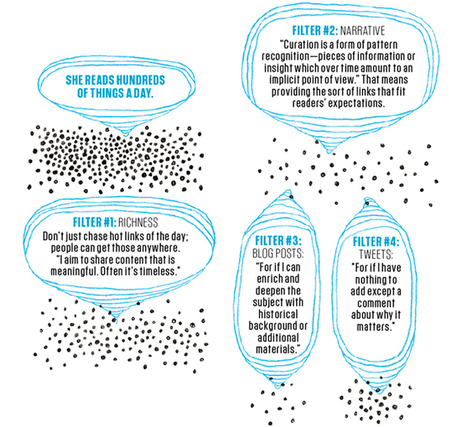




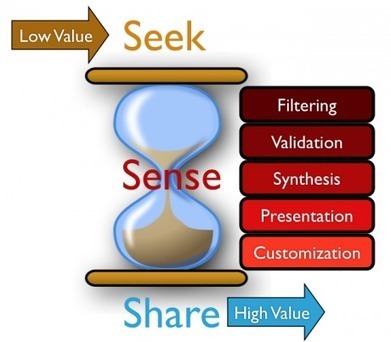


![Content Curation 101 [infographic] | Content and Curation for Nonprofits | Scoop.it](https://img.scoop.it/FxUKXJ5O0JjDVHM_XaDm-zl72eJkfbmt4t8yenImKBVvK0kTmF0xjctABnaLJIm9)




![Curating Information & Making Sense of Data Is a Key Skill for the Future [Research] | Content and Curation for Nonprofits | Scoop.it](https://img.scoop.it/KrkxRVnH-00QDsqHCUKTTTl72eJkfbmt4t8yenImKBVvK0kTmF0xjctABnaLJIm9)

![6 Best Practices for Content Curation [Infographic] | Content and Curation for Nonprofits | Scoop.it](https://img.scoop.it/DMrjI2qZ00EcPMl_Y6GBujl72eJkfbmt4t8yenImKBVvK0kTmF0xjctABnaLJIm9)


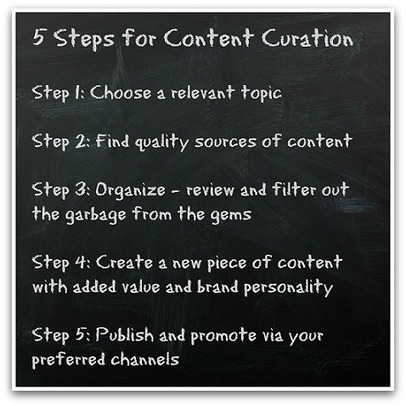

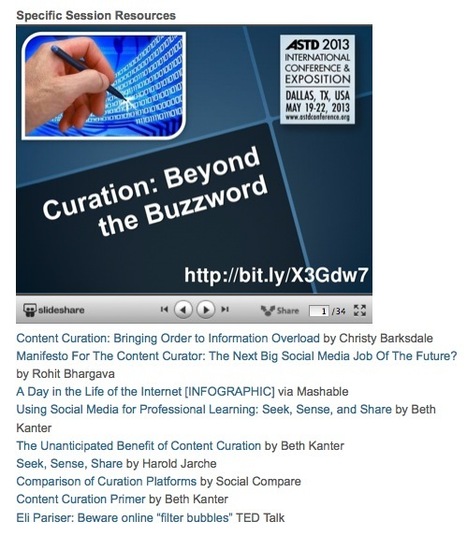


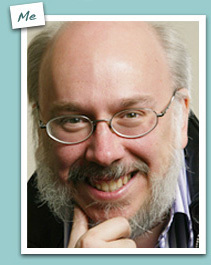
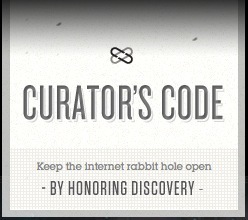
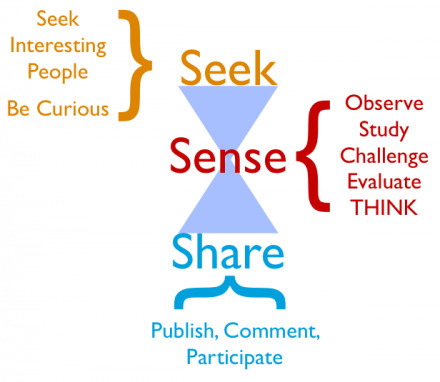
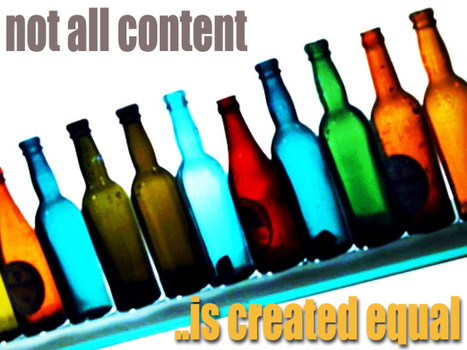






The image above amounts to a template for curating a digital space:
Find something timeless to curate.Fit it into a pattern that makes sense.Find a larger context for why this matters.Share widely.I think this fits into Harold Jarche’s simpler seek-sense-share framework.
Why does this matter? If curation is all that Tufte and Bhatt say it is, then why aren’t scaffolds like these being used more often for training and in learning systems? I am using the curation tool Scoop.it to do curation with my freshman comp students. They use Scoop.it as their introductory platform for beginning to acquire the skills Tufte enumerates above that are part of the academic and business spaces they will eventually live in. I am hoping they will demonstrate why it curation matters as they seek-sense-share their way to long and short form ‘texts’ that they will be writing all semester. That will include essays, tweets, G+ community posts, blog posts, research papers, emails, plusses, favs, instagrams, zeegas, slideshares, pictures, and a massive mobile presence from their own digital spaces. Wish me luck.
Interesting links from article and from comments:
http://curation.wikispaces.com/General+References“Digital Media and Learner Identity: The New Curatorship”: http://www.palgraveconnect.com/pc/doifinder/10.1057/9781137004864http://www.lkl.ac.uk/people/potterhttp://digitalcurationandlearning.wordpress.com/http://digitalcurationandlearning.wordpress.com/2014/02/01/curatorship-is-a-new-literacy-practice/http://luke-callahan.com/students-must-curate-create-a-portfolio/The image above amounts to a template for curating a digital space:
1. Find something timeless to curate.
2. Fit it into a pattern that makes sense.
3. Find a larger context for why this matters.
4. Share widely.
I think this fits into Harold Jarche’s simpler seek-sense-share framework.
Why does this matter? If curation is all that Tufte and Bhatt say it is, then why aren’t scaffolds like these being used more often for training and in learning systems? I am using the curation tool Scoop.it to do curation with my freshman comp students. They use Scoop.it as their introductory platform for beginning to acquire the skills Tufte enumerates above that are part of the academic and business spaces they will eventually live in. I am hoping they will demonstrate why it curation matters as they seek-sense-share their way to long and short form ‘texts’ that they will be writing all semester. That will include essays, tweets, G+ community posts, blog posts, research papers, emails, plusses, favs, instagrams, zeegas, slideshares, pictures, and a massive mobile presence from their own digital spaces. Wish me luck.
Interesting links from article and from comments:
http://curation.wikispaces.com/General+References“Digital Media and Learner Identity: The New Curatorship”: http://www.palgraveconnect.com/pc/doifinder/10.1057/9781137004864http://www.lkl.ac.uk/people/potterhttp://digitalcurationandlearning.wordpress.com/http://digitalcurationandlearning.wordpress.com/2014/02/01/curatorship-is-a-new-literacy-practice/http://luke-callahan.com/students-must-curate-create-a-portfolio/
"A curator, therefore, whether she is a journalist-by-proxy such as Popova or a student completing an assignment in a classroom, not only collects and interprets, but also creates a new experience with it."
Creo que esta definición zanja la discusión sobre si un "Content Curator" es una adaptación moderna al "Documentalista" de los medios tradicionales.
De muy recomendada lectura para los que nos dedicamos a la Curación de Contenidos.